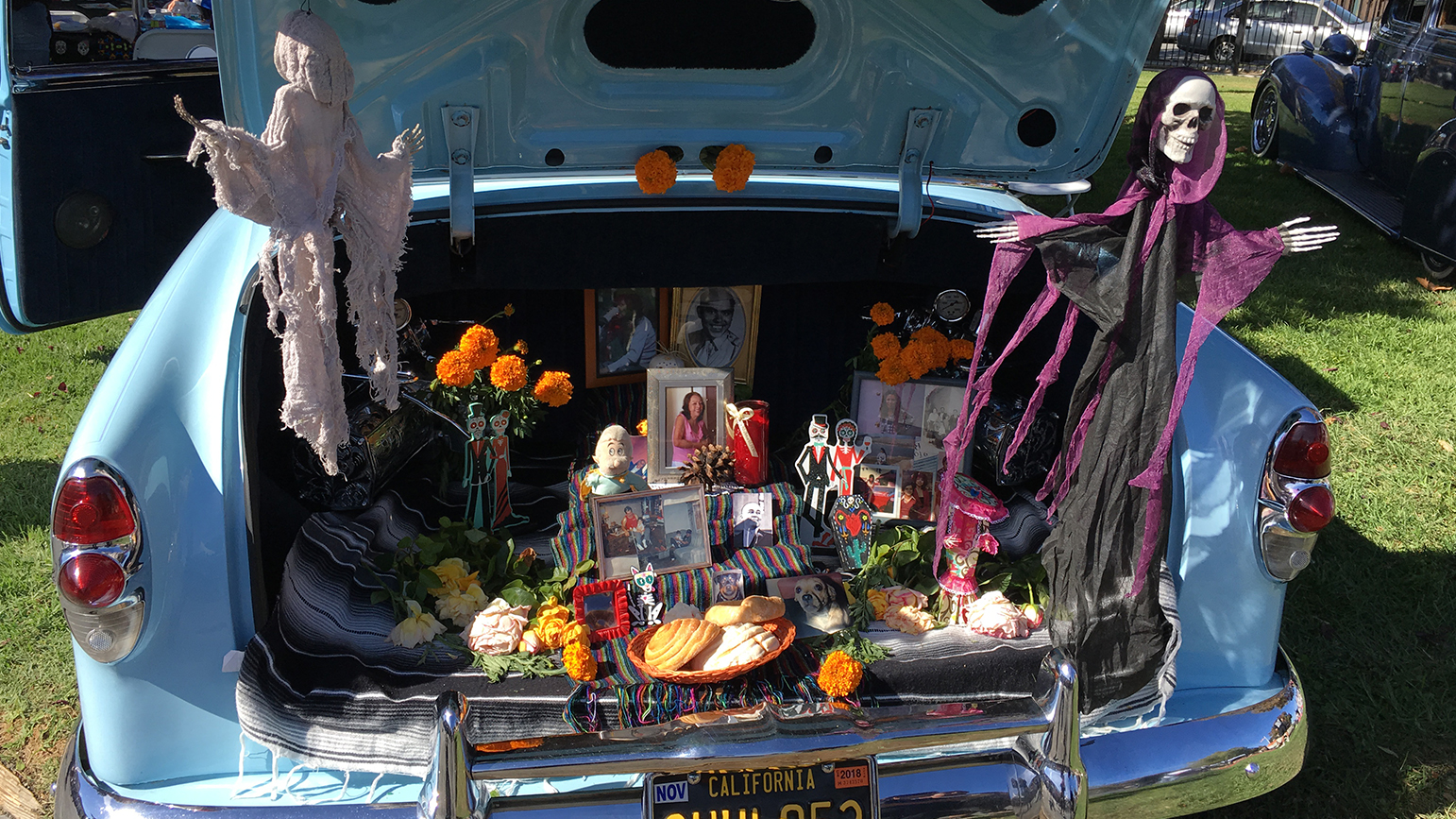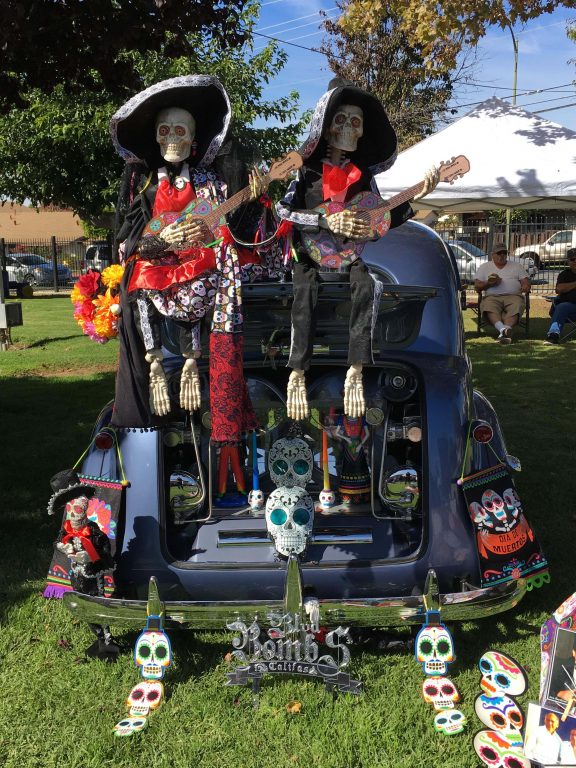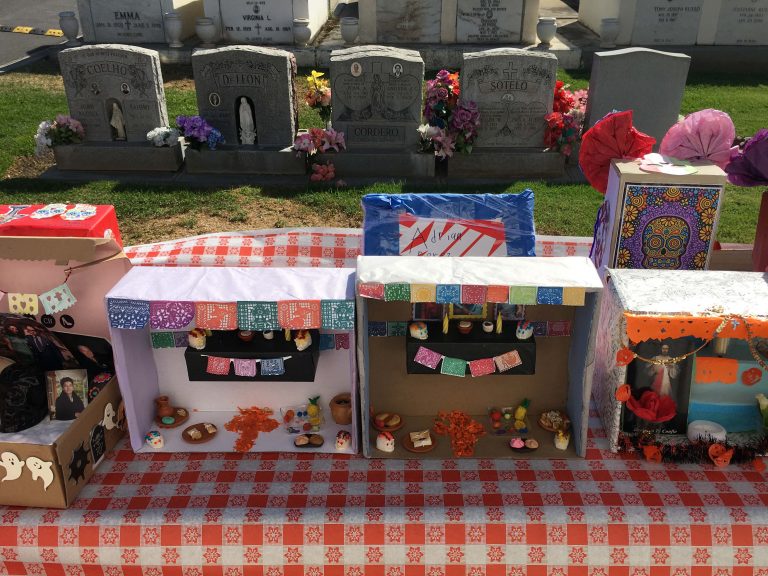
In our daily lives, everything is in a cycle of appearing and disappearing, including birth and death. In my art practice, I have been trying to confront the human desire to separate ourselves from loss and death. To be liberated from the fear of loss and death, I seek to understand the oneness between life and death. Instead of following the development of human desire to make things permanent, I want to look backwards, accepting death — evidence of impermanence — as a part of our lives and to let things go. To do so, I started researching traditional ritual ceremonies that find a connection between life and death.
I was attracted to Dia de los Muertos, the Day of the Dead, because the environment in this festival is colorful and energetic. In my culture, the ideas of death and the cemetery are serious and heavy subjects. In Korean tradition, Jesa, a memorial ceremony for departed ancestors, is performed in a quiet and solemn environment. Unlike Jesa, in the Day of the Dead, the way of honoring the dead is not mourning, but celebrating the dead by dancing and singing together. People feel closely connected to the dead and remove boundaries between life and death.

On October 27, 2018, I visited the 9th annual Dia de los Muertos in Calvary Catholic Cemetery in San Jose, CA. This is a festival that originates in Mexican culture. Combining pre-Hispanic religious rites and Christian feasts, it takes place on the weekend before November 1 and 2, which coincides with the Catholic holiday called All Souls’ & All Saints’ Day. Indigenous peoples of Mexico have combined this with their own ancient beliefs of honoring their deceased loved ones.
People believe that the gates of heaven are opened at midnight on October 31, and the spirits of all deceased children are allowed to reunite with their families for 24 hours. The next day, the spirits of the adults come down to enjoy the festivities that are prepared for them. For these pre-Hispanic cultures, death is a natural phase in life’s long continuum. The dead are still members of the community, kept alive in memory and spirit—and during Día de los Muertos, they temporarily return to Earth. Hoping to reunite with the departed, families spend time around decorated ritual altars in private homes and cemeteries, praying and telling anecdotes about the deceased when they were alive.

This ritual welcomes and remembers the dead with colorful decoration. Participants lead the dead to altars with candlelight and buckets of wild marigolds called cempasuchil. Remembering what the departed favored, they decorate beautiful altars with the departed’s photos, sugar skull cake, and lots of food and drinks the departed liked. The skull and skeleton, the symbols of death, are not a fearful subject to anyone; even children seem to enjoy painting their faces with colorful skulls and decorating sugar skulls with the departed’s name on it. Tombs and people with skull face paint are decorated with vibrant colors. By welcoming and remembering the dead, they feel closely connected to those who have passed on.
A the Day of Death brings families together through various activities. I want to make art that gives a joyful and colorful experience with death. To do that, I will make a grave with leaves and cover it with a linen fabric. The grave is also designed for people to interact with it. Inspired by the vibrant color in the festival, I choose to dye the fabric with green instead of muted color. I want people to play with the grave, stepping and laying on top of it. As people directly interact with the grave, the dead get closer to life, and the living get closer to death.
–Yejin Lee, MFA ’20
1. A altar (ofrenda) in the car at the entrance of the Day of the Death festival.
2. An ofrenda for the departed with bread that they liked, wild marigolds called cempasuchil, pictures, and decorated skulls.
3. A series of mini ofrenda made by children.




